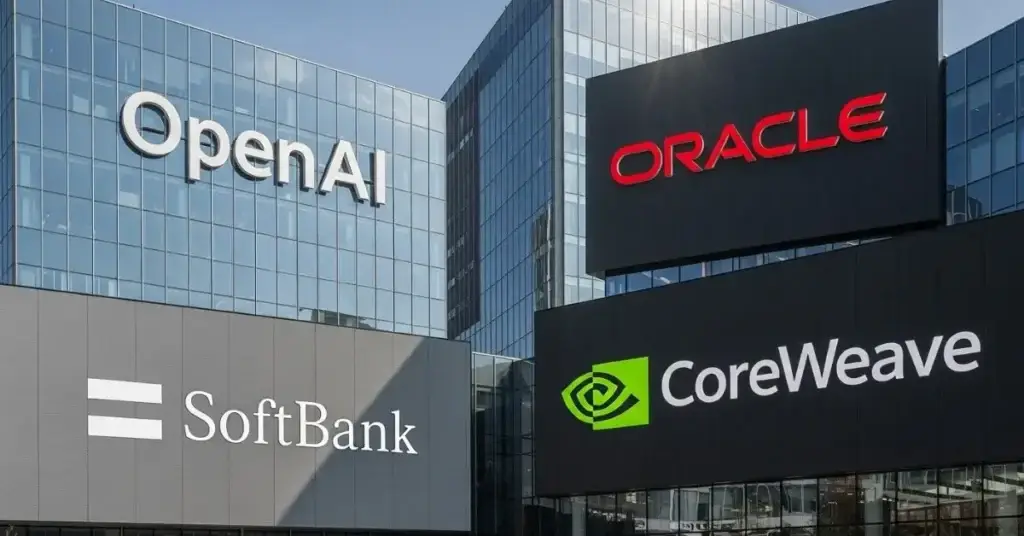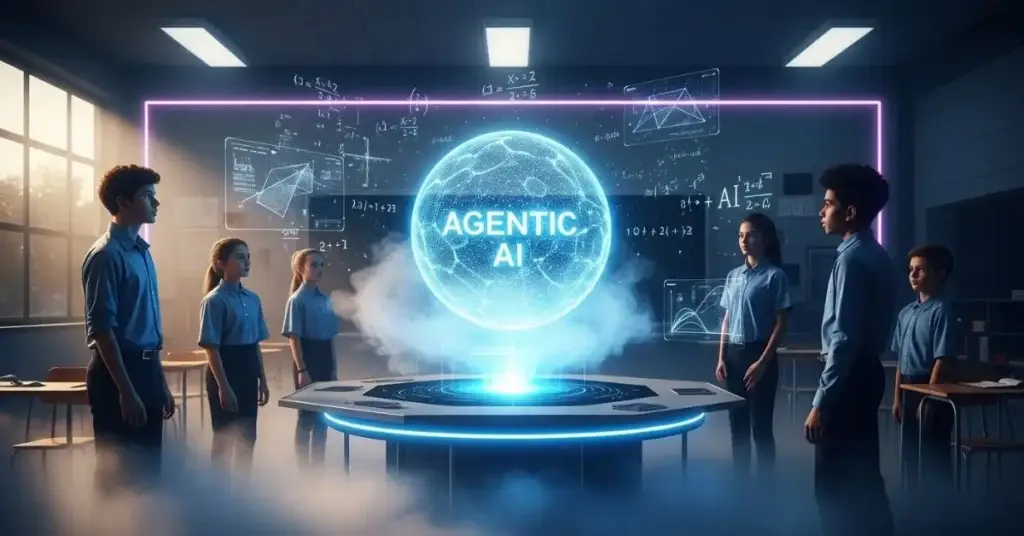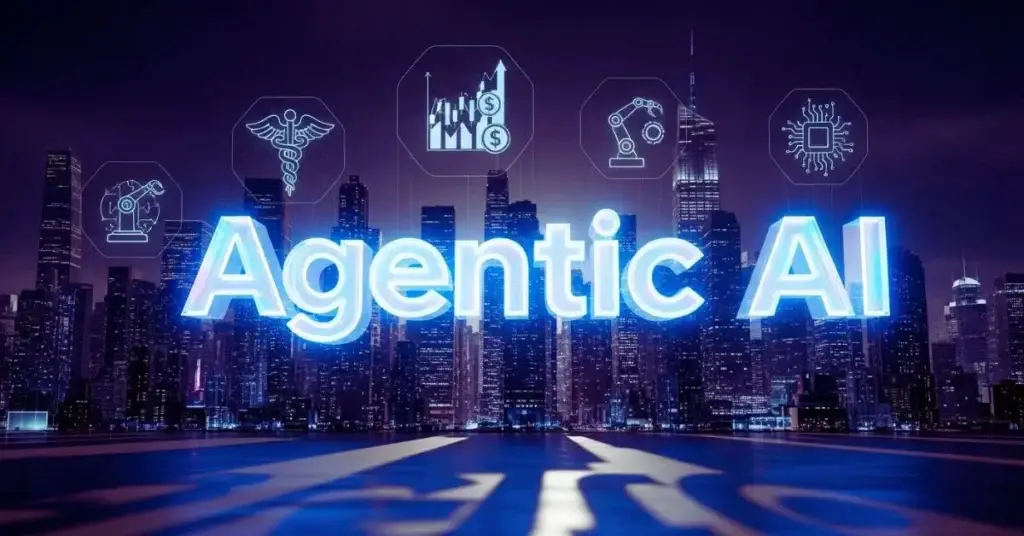
Introduction
The race to build the world’s most extensive AI infrastructure just intensified. OpenAI, Oracle, and SoftBank are joining forces to launch Stargate AI data centers across the United States, with a projected $500 billion investment.
These mega-complexes could reshape America’s AI dominance, energy grids, jobs, and even geopolitics in the next decade.
What Is Project Stargate and Why Does It Matter?
Project Stargate is not just another cloud expansion; it’s a once-in-a-generation infrastructure project designed to deliver up to 10 gigawatts of AI compute capacity in the USA. For comparison, a single gigawatt can power roughly 750,000 homes. Stargate aims to channel this capacity not for homes but for the growing hunger for large language models (LLMs) and AI workloads.
The Players Behind Stargate

- OpenAI – Leading the AI revolution with products like ChatGPT, OpenAI needs massive compute to sustain training and inference at Scale.
- Oracle – Provides cloud infrastructure, enterprise ties, and decades of experience building robust data systems.
- SoftBank – Known for bold bets, SoftBank is funding the project to secure leadership in AI infrastructure.
- Nvidia & CoreWeave – Supplying the AI GPUs and supporting infrastructure critical for training next-gen models.
This collaboration signals that AI infrastructure is now a trillion-dollar race, not just a software game. Oracle, one of the key partners behind the Stargate AI Data Centers, has recently announced major workforce adjustments in the U.S.
Discover the full details of Oracle’s 2025 layoffs and strategic moves here to understand how the company is reshaping its operations while expanding AI infrastructure.
Where Are the Stargate AI Data Centers Being Built?

So far, five new sites have been confirmed, in addition to the flagship Abilene, Texas campus.
Confirmed Locations
- Abilene, Texas (Flagship) – Already operational with massive GPU clusters and a power draw nearing 900 MW.
- Shackelford County, Texas
- Doña Ana County, New Mexico
- Milam County, Texas
- Lordstown, Ohio
- Undisclosed Midwest site
These locations were chosen based on land availability, grid connectivity, renewable energy potential, and state-level tax incentives.
The Scale $500 Billion and 10 Gigawatts of Compute
The Stargate AI data centers project is projected to cost $400–500 billion, with a capacity of 10 GW once complete.
Breaking Down the Numbers
- $100B+ for Nvidia GPUs and AI accelerators.
- Billions in land acquisition, power plant upgrades, and cooling systems.
- Thousands of construction jobs and an estimated 25,000 on-site roles will be available once fully built.
- 7 GW capacity already committed in the announced phase; 10 GW target by the end of 2025.
Stargate is being compared to the Apollo program of AI infrastructure in sheer size.
Powering the Beast: Energy and Environmental Concerns

Training frontier AI models requires unprecedented amounts of energy and water. The flagship Abilene site alone is projected to draw 900 MW, powered by natural gas and renewable energy (wind + solar).
Environmental Challenges
- Water Cooling: AI servers generate massive heat; water-based cooling is efficient but risks local water stress.
- Carbon Emissions: Heavy reliance on natural gas could spark backlash unless offset with renewables.
- Community Pushback: Texas and New Mexico residents have raised concerns about noise, land use, and grid reliability.
For the U.S., this project raises the debate: Can America expand AI without destabilizing its energy systems?
Financing the $500B Mega Project
OpenAI and its partners are adopting a hybrid financing model:
- Debt Financing – Borrowing to lease GPUs instead of upfront payments.
- Equity & Venture Capital – SoftBank’s Vision Fund and Oracle’s balance sheet backing.
- Revenue Recycling – Income from ChatGPT Enterprise and licensing will fund expansions.
This financing approach allows OpenAI to scale faster than competitors without giving up full ownership.
Economic Impact: Jobs, Growth, and Local Benefits
Each data center site is expected to generate:
- Thousands of construction jobs during the build phase.
- Permanent technical jobs in operations, security, and networking.
- Tax revenue boosts for local governments.
Regional Case Study Abilene, TX
Abilene officials report a surge in:
- Housing demand.
- Service jobs (restaurants, logistics, retail).
- Infrastructure upgrades (roads, substations, fiber optics).
If Stargate succeeds, towns like Abilene may become America’s next “AI Silicon Valleys.”
Oracle’s Role in Stargate: A Deeper Look
Oracle isn’t just a side partner providing the backbone of cloud infrastructure, networking, and enterprise integration.
Oracle vs Other Cloud Providers
- Oracle Cloud Infrastructure (OCI) is optimized for high-performance compute, giving Stargate an advantage in AI workloads.
- Unlike Microsoft Azure and Amazon AWS, which divide resources across multiple industries, OCI’s collaboration with OpenAI is hyper-focused on AI scaling.
- Oracle’s decades of experience with databases and enterprise systems mean Stargate isn’t only about GPUs, but also data governance and compliance.
OpenAI’s Need for Stargate: Why Compute Is the Bottleneck
Every new version of GPT requires exponentially more compute. Without Stargate:
- Training GPT-5 and beyond would face delays.
- Inference costs for billions of daily queries would skyrocket.
- OpenAI’s enterprise clients could face service bottlenecks.
With Stargate:
- Scalability is guaranteed for future models.
- Reliability increases with Oracle’s cloud systems.
- Cost-efficiency improves as SoftBank finances upfront infrastructure.
SoftBank’s $500B Bet: Why It Matters
SoftBank’s Vision Fund has always targeted disruptive technology. With Stargate:
- It aims to own a stake in America’s AI backbone.
- This move secures SoftBank’s relevance in the AI era after its mixed track record with WeWork and other bets.
- By betting big on infrastructure, SoftBank positions itself as an indispensable player in the AI supply chain.
Comparison: Stargate’s Partners and Their Roles
| Partner | Core Role in Stargate | Strategic Advantage |
|---|---|---|
| OpenAI | Provides demand for massive compute via LLMs | Ensures sustained need for infrastructure |
| Oracle | Supplies cloud backbone and enterprise-grade systems | Trusted by Fortune 500 companies |
| SoftBank | Funding the $500B project | Risk-tolerant investor with global reach |
| Nvidia | Supplying GPUs | Technological leader in AI computing |
| CoreWeave | Manages GPU-based compute clusters | Scalable and flexible GPU infrastructure |
This comparison highlights how each partner brings unique strengths, making Stargate a highly coordinated effort rather than a one-company gamble.
Risks and Unanswered Questions
Despite its promise, Stargate faces challenges:
- Execution Risk: Can partners deliver $500B of infrastructure by 2026?
- Energy Risk: Will U.S. grids handle 10 GW of continuous draw without blackouts?
- Community Resistance: Water use and land impact could trigger lawsuits.
- Competition Risk: Google, Microsoft, and Amazon are also building mega-centers.
For investors and policymakers, these risks mean Stargate could either be a moonshot success or an expensive white elephant.
Expert Opinions: Why Stargate Could Change Everything
Industry analysts compare Stargate to:
- The Apollo Moon Program – Scale and ambition.
- The Manhattan Project – secrecy, cost, and national urgency.
- Interstate Highway System – infrastructure that fuels generations of growth.
If successful, Stargate AI data centers will define the backbone of America’s AI economy for decades.
Key Takeaways
- Stargate is the largest AI data center project ever attempted in the USA.
- Backed by OpenAI, Oracle, and SoftBank, with Nvidia supplying chips.
- Investment scale: $500 billion with a 10 GW compute target.
- Impact: jobs, energy, environment, and U.S. tech future.
- Risks: execution, financing, and environmental opposition.
Final Word: Project Stargate places America at the epicenter of the AI revolution. By building the world’s most extensive AI infrastructure, OpenAI, Oracle, and SoftBank are fueling U.S. innovation and redefining the country’s technological destiny for decades.
FAQs about Stargate AI Data Centers
Q1. What is the Stargate AI Data Centers project?
Answer: The Stargate AI Data Centers project is one of the boldest U.S. technology investments ever. Backed by OpenAI, Oracle, and SoftBank, it aims to build next-generation AI infrastructure worth nearly $500 billion. This mega-network of data centers is designed to power America’s AI future, ensuring that the U.S. leads the global race in artificial intelligence.
Q2. Which companies are leading the Stargate initiative?
Answer: Three giants are driving the project:
- OpenAI – building and running the AI systems that need supercomputing at Scale.
- Oracle supplies enterprise-grade cloud and data infrastructure.
- SoftBank is injecting massive financial backing to fund expansion.
Together, they form the backbone of Stargate AI Data Centers, ensuring reliability, funding, and unmatched AI capacity.
Q3. Where will Stargate AI Data Centers be located?
Answer: Several sites have already been announced across the U.S., including:
- Abilene, Texas – the flagship location with 900 MW capacity.
- Shackelford County, TX
- Doña Ana County, NM
- Milam County, TX
- Lordstown, Ohio
- One undisclosed Midwest site
By spreading these centers strategically, OpenAI and Oracle are building a distributed yet powerful AI grid.
Q4. How big is the Stargate project in terms of cost and Scale?
Answer: Stargate is projected to cost $400–500 billion and deliver more than 10 gigawatts of compute power. From my perspective, that’s larger than many national power grids. The Scale shows how seriously Oracle and SoftBank are betting on America’s AI future.
Q5. Why is Stargate so important for OpenAI?
Answer: For OpenAI, Stargate is the lifeline for future innovation. Training advanced models like GPT-5 and beyond requires computing power on an unimaginable scale. Stargate ensures:
- Lower cost per computation
- Reliable GPU supply chains
- Infrastructure designed for AI workloads
Without Stargate, OpenAI could struggle to keep up with rising global AI competition.
Q6. What energy and environmental challenges does Stargate face?
Answer: The project will consume vast amounts of electricity and water. Key concerns include:
- Nearly 1 gigawatt demand per flagship site
- Water usage for cooling AI chips
- Carbon emissions if renewable energy isn’t fully adopted
- Community concerns about noise, land use, and grid pressure
Oracle and SoftBank are exploring renewable energy, cogeneration, and efficiency innovations to stay sustainable.
Q7. How is Stargate being financed?
Answer: Funding comes from a hybrid model:
- SoftBank’s equity investment (multi-billion-dollar backing)
- Oracle’s infrastructure and capital injection
- Debt financing through leasing chips and cloud resources
- Revenue reinvestment from OpenAI’s paid AI services
This blended approach ensures long-term scalability without relying on a single funding source.
Q8. What local economic impact will Stargate have?
Answer: Communities hosting Stargate AI Data Centers can expect:
- Thousands of construction jobs
- Permanent technical and operations roles
- Boost in housing, infrastructure, and tax revenue
- Secondary industries grow in services, logistics, and power supply
For regions like Abilene, Texas, this could be the most significant economic transformation in decades.
Q9. What are the significant risks of Stargate?
Answer: Even with $500 billion in play, risks remain:
- Power grid dependency and sustainability challenges
- Regulatory and permitting hurdles
- Local community pushback
- Competition from other hyperscale AI projects
Still, the collaboration between OpenAI, Oracle, and SoftBank makes Stargate one of U.S. history’s most resilient AI infrastructure bets.
Q10. How many jobs will Stargate create?
Answer: Reports suggest 25,000+ direct jobs across construction and operations. Indirect housing, retail, energy, and services jobs will multiply that impact. For American workers, Stargate represents both high-tech employment and broader economic growth.
Q11. How does Oracle’s role in Stargate differ from that of other cloud providers?
Answer: Unlike AWS or Google Cloud, Oracle builds AI-specific infrastructure tightly optimized for OpenAI workloads. This means faster training cycles, lower costs, and a unique synergy between enterprise customers and AI applications.
Q12. How will the U.S. benefit from Stargate AI Data Centers?
Answer: America gains in multiple ways:
- AI leadership globally
- Reduced dependency on foreign chip and compute supply chains
- National security benefits from U.S.-based AI infrastructure
- Stronger local economies and job creation
In short, Stargate strengthens both U.S. innovation and geopolitical competitiveness.
Q13. What is the timeline for Stargate’s completion?
Answer: The first phases (Abilene and other Texas sites) are already under construction. The broader vision is to reach 10 GW capacity by 2026, though individual data centers will go online sooner.


